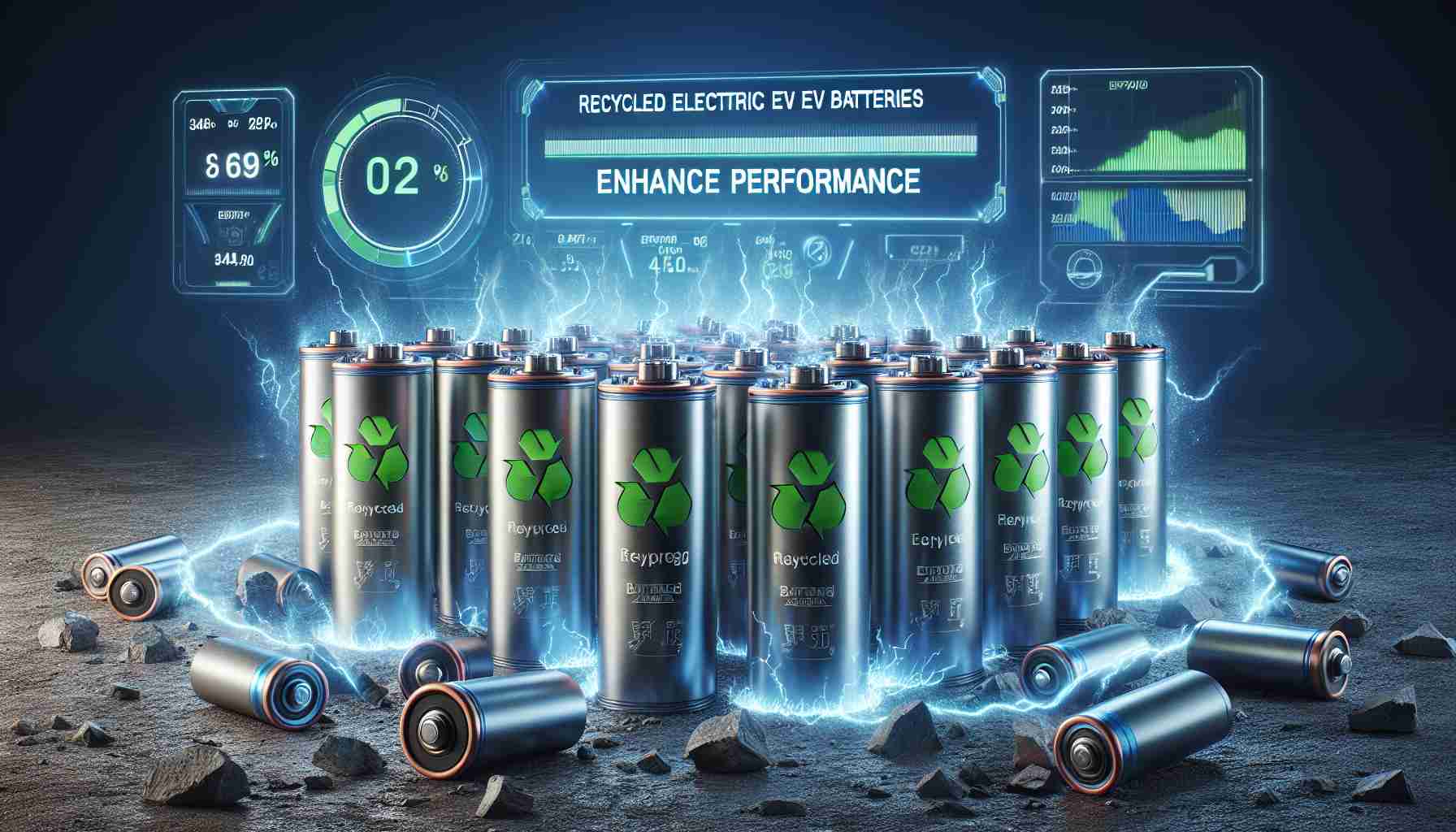- The electric vehicle industry is shifting from extracting new materials to using recycled batteries, which outperform newly mined materials.
- Research at Imperial College London shows recycled cathode active materials (CAM) offer superior purity and performance compared to new materials.
- Recycled CAM enables batteries to charge faster, last longer, and perform better, boasting capacities over 150 mAh.g−1.
- The improved structure and harmony of recycled CAM particles enhance their stability and resilience.
- Altilium’s EcoCathode™ process recovers and repurposes 95% of critical metals, driving a sustainable future for battery production.
- This advance heralds a cleaner, cost-effective era for the EV industry, emphasizing sustainability and efficiency.
A quiet revolution hums beneath the surface of the electric vehicle industry. Where once the focus lay on extracting pristine materials from deep within the earth, it now turns towards a more sustainable source: recycled batteries. Recent discoveries reveal a startling truth—the materials harvested from used EV batteries aren’t just sustainable; they’re outperforming their virgin-mined counterparts.
In the hushed labs of Imperial College London, a team has unearthed a goldmine of opportunity for cleaner technology. Researchers meticulously tested recycled cathode active materials (CAM) supplied by Altilium, a UK-based tech firm with an eye on the future. What they found are materials that not only endure but thrive, showing remarkable purity and enhanced performance.
Imagine a battery that charges quicker, lasts longer, and doesn’t wear out your wallet. Recycled CAM, tested through intricate procedures involving coin cells and pouch cells, challenges the norm by delivering higher cyclic performances with capacities surpassing 150 mAh.g−1. This finding points to a world where sustainability and efficiency walk hand in hand, offering consumers batteries that promise not just longevity but reliability.
The secret? Envision particles in perfect harmony, their improved structure granting them stability and resilience. The potential here is monumental, driven by Altilium’s innovative EcoCathode™ process, which champions a future where 95% of critical metals are recovered and repurposed.
The takeaway is clear: recycled battery materials are not just viable—they’re superior. This evolution spells a cleaner, more cost-effective era for the EV industry. As these remnants of old batteries transform into tomorrow’s powerhouse, they signal a brighter, eco-friendly future motoring ahead.
The Surprising Superiority of Recycled Battery Materials: Changing the Game for Electric Vehicles
## The Dawn of a Sustainable EV Era
The electric vehicle (EV) industry is witnessing a revolutionary shift. While traditional practices focused on extracting virgin materials from the earth, recent advancements have spotlighted a more sustainable and high-performing alternative: recycled batteries. A groundbreaking study at Imperial College London reveals that recycled battery materials not only match but often outperform their virgin-mined counterparts.
The Breakthrough Discovery
In collaboration with UK-based tech innovator Altilium, researchers tested recycled cathode active materials (CAM) and found them to hold remarkable purity and superior performance. These recycled materials exhibit faster charging times and longer battery life, demonstrating higher cyclic performances with capacities exceeding 150 mAh.g−1. Such enhancements promise EV consumers a future where sustainability and efficiency coexist without compromise.
Why Recycled Batteries Are Superior
The key to the superior performance of recycled batteries lies in the precise structural harmony of the recycled particles. The innovative EcoCathode™ process, developed by Altilium, allows for a recovery and repurposing rate of 95% of critical metals. This not only ensures environmental sustainability by reducing mining but also enhances the battery’s stability and resilience.
Implications for the Global Community
# Environmental Impact
Recycling battery materials significantly reduces the environmental footprint of the EV industry. With less reliance on mining, the risk of habitat destruction and pollution decreases, aligning with global efforts to tackle climate change.
# Economic Benefits
Reduced dependency on newly mined materials can lead to cost savings, making EVs more affordable for consumers. This cost-effectiveness can drive broader adoption of electric vehicles, accelerating the transition to clean transportation.
# Technological Advancements
The success of recycled batteries in outperforming mined materials could spur further technological innovation. As research continues, we may soon see batteries with even greater performance capabilities, further extending the range and efficiency of electric vehicles.
Key Questions and Future Considerations
– How can the EV industry scale the use of recycled materials? The answer lies in enhancing recycling infrastructure and technology. Investment in recycling facilities and processes will be critical to meet the growing demand for recycled CAM.
– Will consumers buy into recycled technology? With demonstrated advantages in both performance and cost, consumer buy-in is likely to increase as awareness of the benefits grows.
– What does this mean for traditional mining operations? While mining will continue to play a role in material supply, its share might decrease, prompting mining companies to invest in recycling technologies and sustainable practices.
The findings from Imperial College London and Altilium signal a promising shift towards a cleaner, more efficient future for the EV industry. As recycled battery technology continues to advance, it offers a compelling path forward that balances ecological responsibility with technological progress.
For more information on developments in sustainable technology, visit Imperial College London and Altilium.













